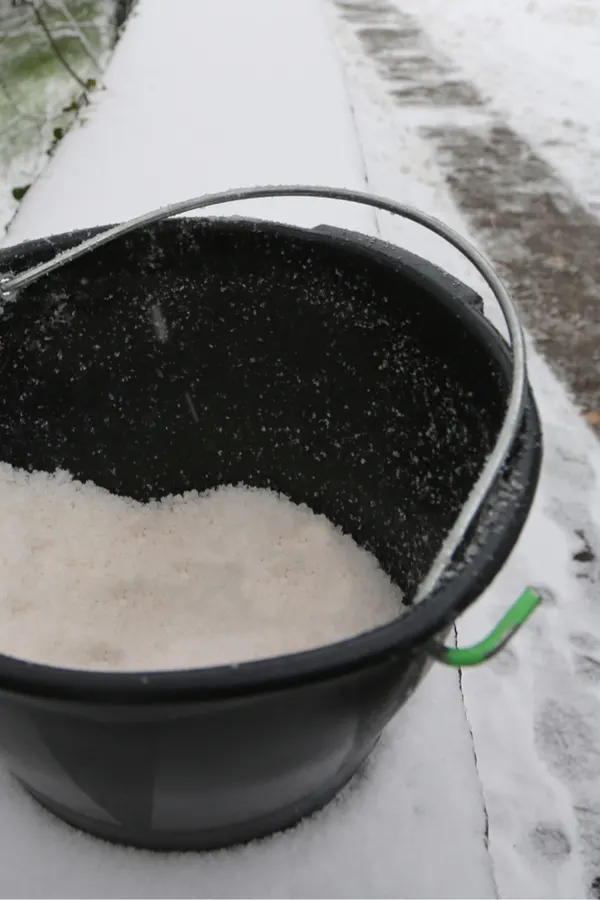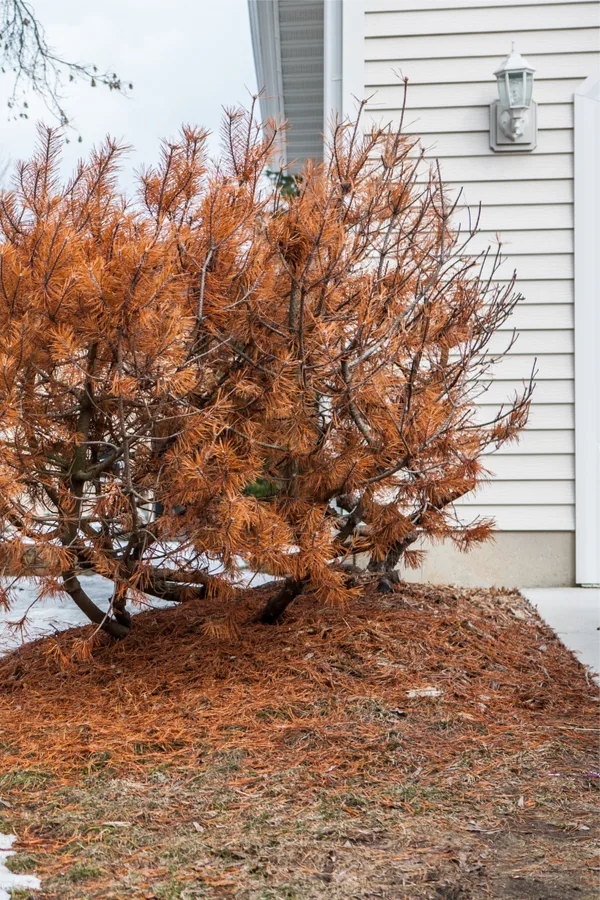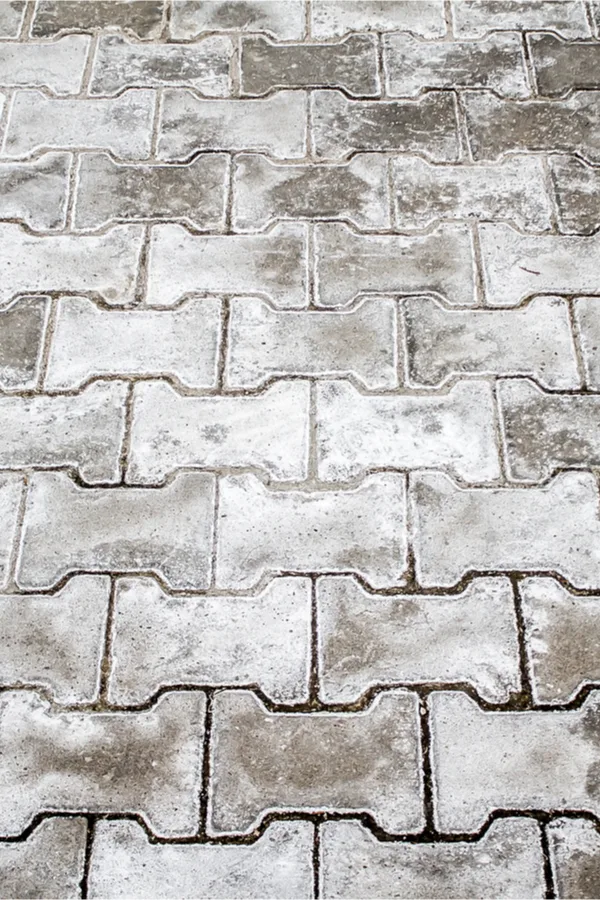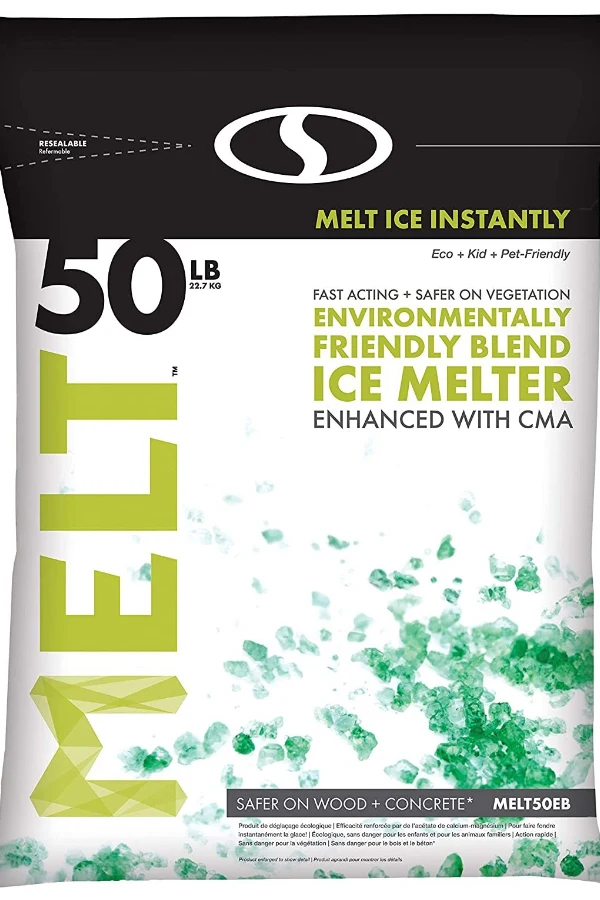Is it really possible to melt snow and ice safely from sidewalks and driveways without harming perennials, shrubs, trees, lawns – and pets too?
When winter arrives with all of its fury, it can certainly make for dangerous and slippery conditions. Especially when it comes to the driveways and sidewalks right outside of our home.
But before you head out to spread rock salt and other snow melting products, it’s important to know that many of the most popular choices are quite harmful to plants. In fact, not only can they injure plants, but in many cases they can kill them entirely.

Not only that, many can also be harmful to pets too. Whether by licking and ingesting the products, or by irritating their paws and fur when they walk across it.
And if that wasn’t enough, these same ice melting products can leave lasting damage to the very sidewalks and driveway surfaces you are trying to clear!
Avoiding Rock Salt – How To Melt Snow And Ice Safely
One of the most commonly used products for melting snow and ice is rock salt. It is fairly inexpensive, abundant, and works well in preventing ice and snow build up on surfaces.

But rock salt also happens to be one of the absolute worst for damaging perennials, shrubs and trees. And it can be equally bad for pets and surfaces too.
Rock salt, although highly effective at melting snow and ice, is also highly corrosive. And not just to plants, shrubs and trees, but to the concrete sidewalks, bricks and asphalt it’s applied to.
After the snow and ice melt off, much of the salt flows off into the surrounding soil. As it does, it penetrates into the soil, and then is absorbed through the roots of plants.
The Issue With Rock Salt
Salt, by its very nature absorbs water. And as it does, it robs vital moisture from the plants that can quickly injure them. And the damage can be deceiving in winter, when plants are still lying dormant.

But as spring emerges, many plants affected by excessive salt levels in the soil will fail to bloom or set leaves. And for lawns, the damage is easily noticeable by large brown or bare spots where the salt has pooled to. It is the same effect that using Epsom salt on plants can have over time as well. See : Why Epsom Salt Isn’t Good For Plants
The salt that doesn’t melt or wash is quite harmful to sidewalks and driveways too. The corrosive salt can easily etch and stain the surface permanently. And of course, it can certainly irritate or damage paws of pets that walk across it too.
How To Safely Melt Snow & Ice
So what are the safest and most effective solutions? Well, in terms of pure safety for plants and animals, simply clearing the walks and applying a bit of sand for traction is the best option.
But other options for treatment do exist. In the past few years, a whole slew of new products have hit the market that are safer for pets, plants and surfaces.

Many contain natural ingredients like beet juice and pickle juice, which have been shown to help melt snow and ice at much lower temperatures than rock salt. Products like Melt also contain calcium, which actually helps improve the soil.
Products like these are pet and kid-friendly and safer for the environment. They are also of course much safer to use on grass, plants and trees. They also help to put a dent in the estimated 20 million tons of salt that is used and applied every year just for snow and ice removal.
Here is to melting snow and ice safely on your walkways and driveway this year!
This Is My Garden is a website dedicated to spreading the love and knowledge of gardening around the world. We publish two new garden articles each week. This article may contain affiliate links.
